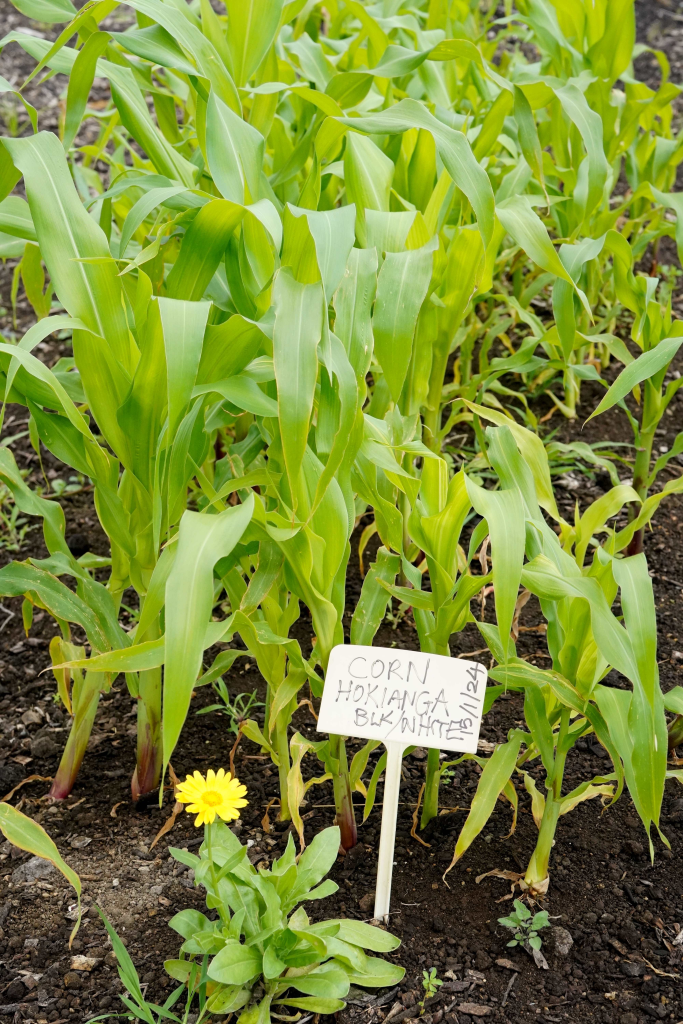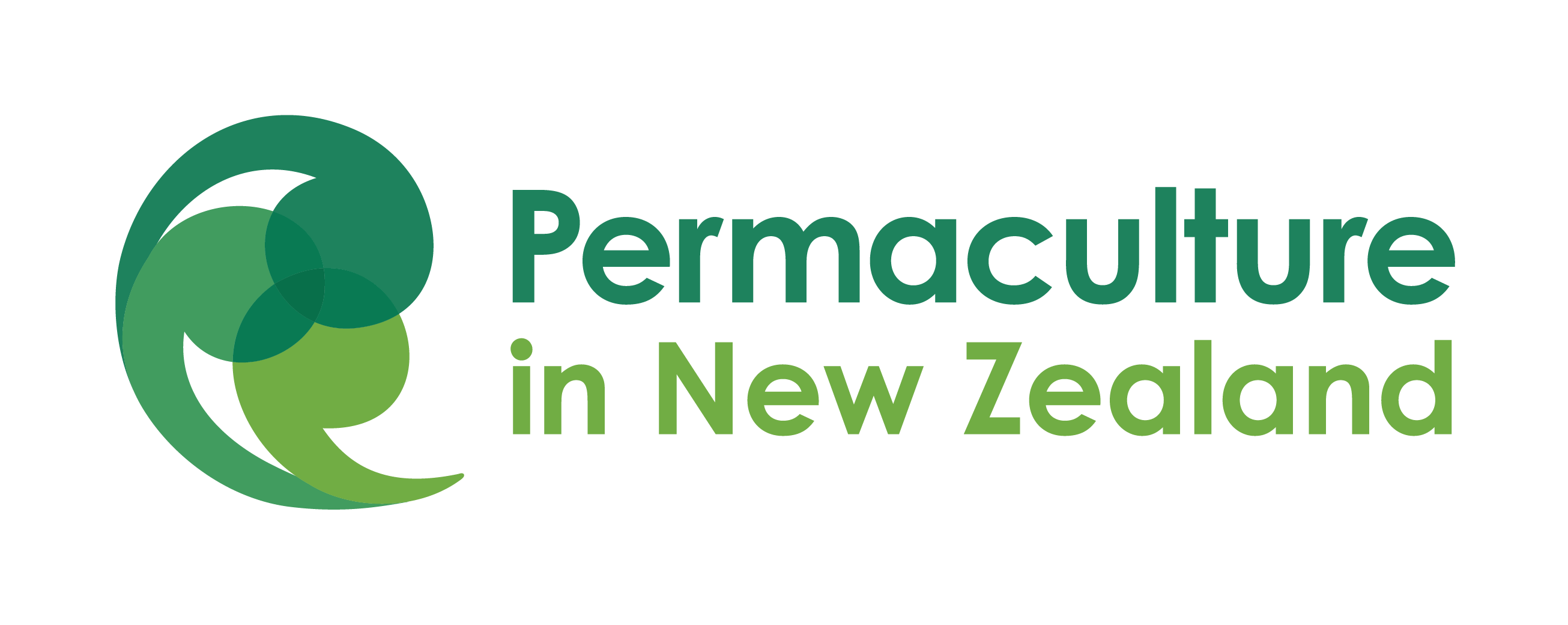Kia ora koutou Permaculture Whānau,
As we enter April I am sensing the change of the season occurring.
All around me witnessing the beautiful rainbow of autumn colours changing, on what seems to be a daily basis, feeling the cooler overnight temperatures when I go out to feed the animals in the dark of the early morning, and there has even been the hint of wood smoke in the air suggesting fires have begun to be lit and tested ahead of winter.
Having been back in New Zealand for only seven years after nearly 20 years in Australia, I am still learning how to adapt my permaculture thinking and methods to my New Zealand context as I no longer live in the dry brittle climate where I grew strawberries and lettuce in winter, and bananas and mangoes in summer. I have suffered a few failures and adapted my processes moving things to suit the environment I reside in here, like changing my garlic planting to the start of April in an effort to avoid the rust that reduces the yield if the crop is still young.
But regardless of if your garden is a few pots on a verandah, a food forest under development or a larger food growing space, hopefully you are trying new crops, testing new techniques and just giving it a go without worrying about failure, because it is only through trial and error that we can adapt techniques to our own personal situation, microclimate and abilities, and it is through this testing that we expand our understanding and can go on to share our knowledge with others.
And this is where you come in. The permaculture community is a wealth of knowledge and we want to share it. So if you are trying something new or testing an element of permaculture at your place, document the process, keep notes, take photos and then get in touch so that we can share your investigation with the wider permaculture community and learn from each other.
Ngā mihi
Fiona Moorhouse
Chairperson
Permaculture in New Zealand
Three food growers using hua parakore principles

An increasing number of permaculture food growers in New Zealand are adding hua parakore principles to their systems. One of hua parakore’s champions, Dr Jessica Hutchings (Ngāi Tahu, Ngāti Huirapa, Gujarati), describes it as an indigenous organic verification system. Hua parakore was developed by Te Waka Kai Ora (National Maori Organics Authority), with Māori food sovereignty as one of its goals, so it makes sense that much of it is based on the nature-based Māori knowledge system for growing kai according to the tikanga and generations-old wisdom of diverse Māori communities. These principles include growing food that is traceable and have not been exposed to contaminants as well as working towards an environment in balance with nature in self-reliant and self-sustaining ways. Permaculture practitioners who wish to further understand the research process to develop the hua parakore framework can read this journal article. Photo of Pourewa Māra Kai by Carol Jardine.

Three hua parakore farms
Pourewa Māra Kai, Auckland
This community vegetable garden of Ngāti Whātua Ōrākei is located in one of Auckland’s central suburbs. All food grown here is distributed for free to whānau, the wider local community and Auckland City Mission. Read more on the Pourewa website.
Papawhakaritorito Hua Parakore Whānau Food Farm, Upper Hutt
In Dr Jessica Hutching’s own small scale farm, organic growers and gardeners will recognise many hua parakore practices, including cover crops to stimulate soil microbiology, intercropping, multicropping and minimal soil disturbance (no-dig). More info on the Papawhakaritorito website.
Papatūānuku Kōkiri Marae, Auckland Most recently in the news for opening its koha cafe, where diners pay what they can, this marae has long been known for its varied programmes to feed the community. This includes the food boxes for families in need, filled with produce from its large garden, as well as its Kai Ika project, which provides fish heads, frames and offal. More on the marae website here. Photo of the corn bed at Pourewa Māra Kai by Carol Jardine. Text by Mei Leng Wong
More on hua parakore

Principle 9: Use edges and value the marginal
This is arguably the one time where you should give something the side eye, because this principle encourages us to not focus on just the big picture or one major crop, but to also pay attention to what’s on the peripheral and the margins. This is because the place where to ecosystems meet, where the land meets the sea, or where woodland meets pasture, for instance, is rich with biodiversity and wildlife. It’s well worth incorporating this design concept when creating shelterbelts or ponds. Photo by Werner Sevenster on Unsplash. Text by Mei Leng Wong
Did you hear news about the Hui?
Last month, we let you know that the planning for the 2024 National Permaculture Hui is underway. Traditionally, the hui has been hosted by different regions around the country, but after such a long space of time without a hui, the council will be managing this event.
This provides the regions time to consider if they will be the hosts for the 2025, 2026 or 2027 hui as it is an event that takes both time and a great deal of teamwork to plan.
So do you think you want to host a future hui? We have heard rumours of members who are keen to take this on in their region, so gather your tribe and have a chat, then let us know and we will work with you to make it happen.
But what we can tell you now is to lock in the dates of November 9 and 10 for this year’s hui, and if you have extra time either side of that weekend we will be sharing how you can extend your stay. Paid members of Permaculture in New Zealand will be provided the option to purchase tickets before they are released to the general public and will get a discount on the price. The Council are meeting in person at the start of May for a weekend of work on both the hui and other organisational aspects and so keep an eye out as there will be lots of information being shared over the coming months.
Share your permaculture journey
We’d love to update main image on the Permaculture Council website with photos of farms or garden belonging to one of our members. If you’ve got a great photo(s) of your place, and would love to share it with others, please let us know! Email it to newsletter@permaculture.org.nz, with your name and location. Further updates to the new Permaculture Council website
Council members are working hard to improve our current website to serve members better. We’ve listened to feedback and are well aware of the need to deliver more reliable information, focused on New Zealand conditions. We’re working on it!

